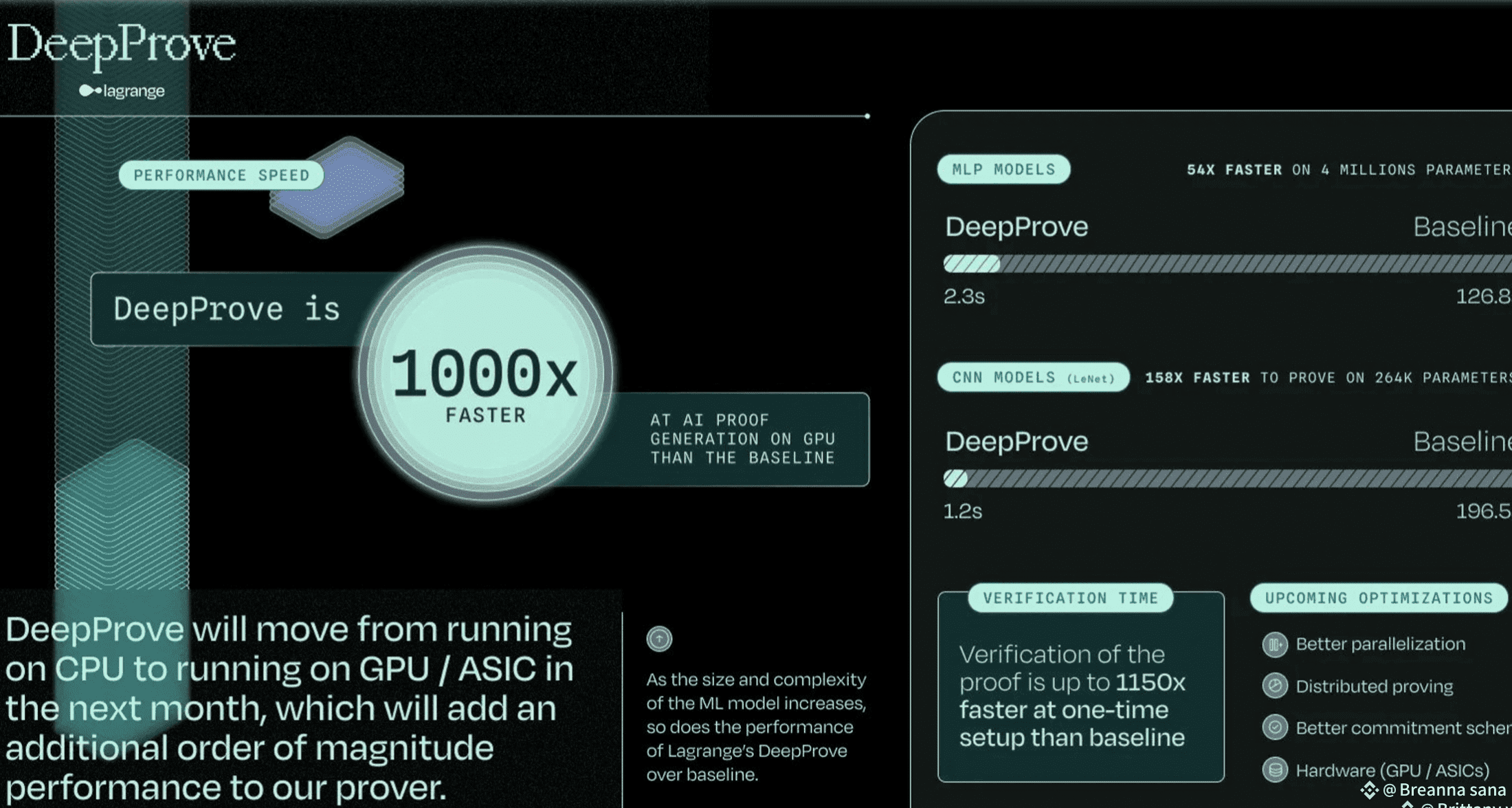In the race toward scaling blockchains, one truth has become clear: modularity is the future. Instead of overloading a single chain with every taskconsensus, execution, settlement, and data availability the industry is moving toward splitting these layers and letting specialized systems handle each role. This shift creates new opportunities, but also new challenges. That’s where Lagrange steps in, building the cryptographic backbone that modular blockchains will rely on.Unlike projects that simply follow hype, Lagrange is grounded in the hard mathematics of Zero-Knowledge Proofs (ZKPs). These proofs allow one party to verify the correctness of computations without re-executing them, ensuring trust, privacy, and scalability at the same time.
More Than a ZK Project A Full Infrastructure Network
Lagrange positions itself as ZK infrastructure, not just another ZK toolkit. At its core, it offers:
✦ ZK Coprocessor – An off-chain computation engine that generates proofs for heavy workloads.
✦ Decentralized Proof Network A system of distributed nodes that verify and relay these proofs back on-chain.
The result?
Developers can shift complex computations off-chain, drastically cutting execution costs, while still anchoring their results in cryptographic guarantees.This is particularly important in an era of AI-driven applications, rollup-heavy ecosystems, and cross-chain interoperability, where trust-minimized computation is essential.
Deep Prove: ZK at Scale
A standout feature in Lagrange’s stack is Deep Prove. Traditional proof systems face bottlenecks when scaling to massive workloads—think rollup state transitions, advanced AI inference, or large-scale data verification. Deep Prove solves this by parallelizing proof generation and optimizing circuits for speed and efficiency.It’s essentially ZK infrastructure designed for industrial-grade performance. With Deep Prove, computations that would normally be too costly or slow to prove can now be processed efficiently, enabling applications like:
✦ Fast rollup validity proofs
✦ AI inference with verifiable outputs
✦ Cross-chain proof sharing for modular ecosystems
This makes Lagrange not just a research experiment, but a production-ready ZK backbone.
✦ Restaking, Security, and Incentives
Lagrange also integrates with EigenLayer, leveraging Ethereum’s restaking mechanism for additional security. Validators can secure the Proof Network by restaking ETH, while proof generation itself becomes a marketplace.
Here’s how it works:
✦ Users or dApps submit computational tasks that require proof.
✦ Node operators stake $LA Lagrange’s native token, to bid on proof jobs.
✦ Successful operators earn fees and rewards, creating a decentralized market for proving power.
✦ This model ensures that security, scalability, and incentives are aligned critical for sustainable infrastructure growth.
Why Lagrange Matters
In Web3, speed has often been the main focus. But as applications mature, verifiability is just as important. Without proof of correctness, decentralized systems risk drifting toward centralized trust assumptions.Lagrange provides the missing layer: proof of truth, at scale. Its modular, chain-agnostic design means any blockchain can integrate with its ZK infrastructure, unlocking:
✦ Faster, cheaper rollups
✦ Secure AI and DeFi applications
✦ Cross-chain interoperability without trust trade-offs
Final Take
Lagrange isn’t chasing the latest crypto trend it’s building the invisible infrastructure that modular blockchains and verifiable AI will depend on. With Deep Prove, a decentralized Proof Network, and alignment with EigenLayer, Lagrange is shaping the foundation for the next generation of decentralized applications.In a digital world overflowing with data, hype, and speed, Lagrange’s promise is simple yet profound: don’t just compute prove.
Official account